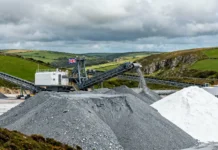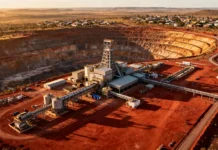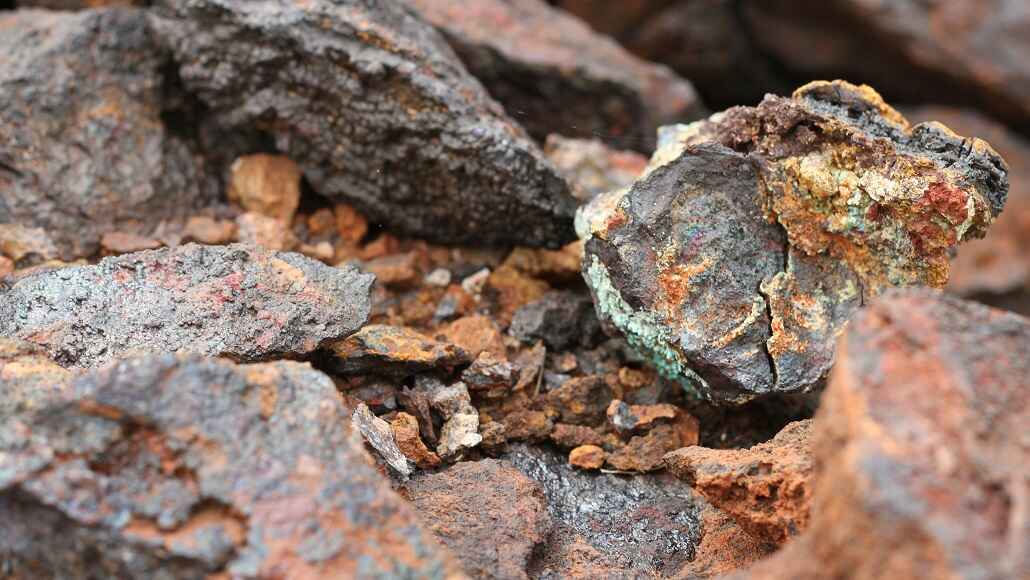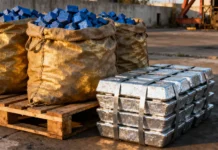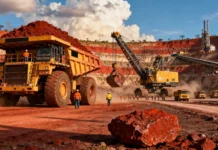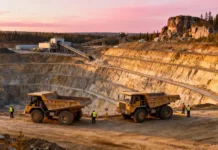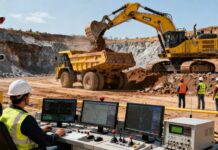Engineering the Green Mine for a Sustainable Industrial Future
The concept of the “green mine” represents a fundamental reimagining of mining infrastructure, operations, and culture toward comprehensive environmental sustainability. Rather than viewing mining as inherently environmentally destructive activity requiring damage minimization, green mine engineering approaches mining as industrial opportunity where sustainable design principles enable environmental protection alongside economic production.
Green mine engineering integrates renewable energy systems, waste minimization strategies, circular economy principles, and advanced environmental management into coherent operational frameworks. More than accumulation of individual sustainability initiatives, green mine engineering represents holistic design philosophy where environmental protection embeds throughout mining operations from initial planning through closure. Mining companies embracing this vision demonstrate that genuinely sustainable mining achieves technical feasibility and increasingly proves economically advantageous.
Defining Green Mine Engineering Principles
Green mine engineering rests on several foundational principles distinguishing it from traditional mining with sustainability additions. First, environmental considerations embed into initial project design rather than emerging as afterthought. Projects designed with environmental integration from inception achieve superior sustainability compared to retrofitting environmental systems into conventional designs. Second, lifecycle thinking encompasses entire mining operation duration including closure and post-mine land use rather than focusing only on production years. Third, comprehensive stakeholder engagement ensures mining design reflects community priorities and concerns rather than imposing operations on unwilling populations.
These principles translate into specific engineering practices. Mine site planning minimizes environmental footprint through careful layout design reducing land disturbance. Waste rock placement minimizes acid mine drainage potential through strategic material management. Processing facility design incorporates closed-loop water systems and waste minimization from inception. Energy systems deploy renewable generation rather than diesel reliance. Environmental monitoring systems embed throughout operations providing continuous compliance assurance.
Renewable Energy Integration in Mine Design
Energy systems represent perhaps the most significant green mine engineering focus. Modern mining operations employ enormous electricity and fuel quantities; transitioning to renewable energy transforms mining’s environmental profile fundamentally. Green mine designs systematically incorporate solar, wind, and where feasible, hydroelectric generation.
Solar installations prove particularly suitable for mining locations. Many mining sites locate in regions with strong solar resources; solar panels require minimal ongoing maintenance suitable for remote locations; solar generation matches mining’s daytime operational patterns reasonably well. Increasingly, mining companies incorporate substantial solar capacity into green mine designs, often achieving 40-50 percent renewable electricity supply.
Wind resources similarly support mining operations in appropriate geographic locations. Mountainous regions suitable for mining often feature strong wind resources enabling wind turbine deployment. Hybrid solar-wind systems prove especially effective in locations experiencing seasonal solar-wind resource variations, ensuring consistent renewable generation across seasons.
Storage systems including batteries and mechanical storage enable decoupling renewable generation timing from mining operational timing. Energy generated during peak renewable periods stores for deployment during lower production periods, ensuring 24/7 renewable energy availability regardless of operational schedules. As battery storage costs continue declining, storage systems become increasingly feasible even for remote mining operations.
Waste Minimization and Circular Economy Integration
Green mine engineering emphasizes waste minimization through design and operational approaches. Rather than accepting waste generation as inevitable mining consequence, green mine designs systematically reduce waste at source through process optimization. Advanced beneficiation technologies recover valuable minerals conventional processing abandoned, reducing waste generation while increasing production value per ore ton.
Circular economy principles integrate throughout green mine designs. Tailings reprocessing systems enable recovering value from historical waste; byproduct streams produce revenue rather than requiring disposal; processing facilities themselves eventually repurpose materials rather than creating end-of-life waste. Some forward-thinking mining companies are planning eventual decommissioning where mining infrastructure materials become feedstock for other industries rather than waste requiring disposal.
Operational waste minimization similarly receives systematic attention in green mine designs. Advanced material handling systems reduce spillage and dust generation. Improved equipment design reduces consumable requirements. Efficient water systems minimize wastewater generation. These operational improvements collectively reduce mining’s environmental footprint substantially compared to conventional operations.
Environmental Management Systems and Monitoring
Green mine engineering incorporates comprehensive environmental management systems monitoring performance continuously and enabling adaptive management responding to emerging conditions. Real-time environmental monitoring throughout mining sites provides early warning of potential issues, enabling preventive action before problems develop.
Water quality monitoring systems track mining operation impacts on adjacent waterways; air quality sensors monitor dust and emission levels; soil monitoring tracks changes to surrounding land; biological surveys monitor ecosystem responses. This comprehensive monitoring enables mining companies to demonstrate genuine environmental stewardship and identify improvement opportunities continuously.
Advanced analytics applied to environmental data reveal patterns enabling predictive environmental management. Rather than reactive responses to environmental incidents, green mining operations employ data-driven insights to prevent problems before they occur. Machine learning algorithms analyzing historical environmental data can predict conditions likely to cause issues, enabling preventive interventions.
Biodiversity Conservation and Habitat Protection
Green mine engineering increasingly emphasizes active biodiversity protection rather than passive habitat avoidance. Mining operations can intentionally enhance biodiversity through strategic habitat creation and restoration practices integrated with mining operations.
Some mining companies are implementing programs where operational areas transition to biodiversity conservation zones post-mining. Tailings storage facilities designed as constructed wetlands provide habitat supporting diverse aquatic species. Waste rock areas reshape into wildlife corridors and habitat enhancement zones. These integrated approaches transform mining’s environmental legacy from habitat destruction into habitat creation.
This approach requires thoughtful design but increasingly proves economically beneficial. Biodiversity conservation provides ecosystem services including water filtration, pollination, and pest control benefiting surrounding regions. Communities benefit from enhanced local ecosystems; companies benefit from improved social license and reduced environmental liability; wildlife benefits from expanded habitat. Green mine engineering enables these win-win-win outcomes.
Closure and Land Restoration Planning
Green mine engineering embeds closure planning into initial mine design rather than treating closure as final afterthought. From project conception, mining companies plan eventual closure, restoration of mined lands, and productive post-mining land use. This planning ensures mining operations don’t compromise eventual site restoration feasibility.
Closure planning influences initial operational decisions significantly. Overburden material strategic placement enables eventual site reshaping into productive uses rather than requiring expensive remediation. Tailings management systems designed with closure in mind enable progressive reclamation rather than leaving legacy liabilities. Closure budgets determined during planning ensure financial resources exist for thorough restoration upon production cessation.
Progressive closure approaches involve restoring portions of mining sites during active operations rather than deferring all restoration until cessation. This approach reduces end-of-life restoration burden while enabling adaptive management learning from restoration results. Some mining operations now maintain continuous restoration activities concurrent with extraction, demonstrating that mining and environmental restoration can proceed simultaneously rather than sequentially.
ESG Performance and Stakeholder Accountability
Green mine engineering delivers substantial ESG performance improvements compared to conventional mining. Environmental performance improves through renewable energy adoption, waste minimization, and comprehensive environmental management. Social performance improves through enhanced community benefit, improved working conditions, and transparent stakeholder engagement. Governance performance improves through systematic compliance monitoring and adaptive management.
These ESG improvements increasingly attract capital and investor support. Investment funds increasingly emphasize ESG performance; companies demonstrating strong ESG metrics access capital at lower cost. Institutional investors increasingly divest from mining companies lacking credible sustainability commitment. This capital market evolution creates powerful economic incentives for mining companies adopting green mine engineering approaches.
Economic Viability and Long-Term Value Creation
Green mine engineering increasingly proves economically advantageous compared to conventional mining. Lower operating costs from energy efficiency and waste reduction; higher revenues from improved resource recovery; reduced environmental and social liabilities; maintained or improved social license supporting operational continuity—these economic factors combine to make green mine engineering financially rational.
Long-term economic analysis increasingly reveals that green mining creates greater shareholder value than conventional mining focused on cost minimization. Companies investing in green mine engineering capture economic value unavailable to conventional miners through improved operational efficiency, enhanced stakeholder relationships, and reduced long-term liabilities.
The Future of Mining: Green by Design
The trajectory of mining evolution clearly points toward green mine engineering becoming industry standard rather than exceptional practice. Regulatory frameworks worldwide tighten environmental standards; investment capital increasingly flows toward sustainable operations; communities increasingly demand environmental responsibility; younger workforces prefer employing companies demonstrating genuine sustainability commitment.
Mining companies positioning themselves as leaders in green mine engineering will thrive in this evolving landscape. Those maintaining conventional approaches risk increasing regulatory compliance costs, stakeholder opposition, social license challenges, and eventually uncompetitive economics. The future mining industry will be green mining—the question for companies today is whether they’ll lead this transformation or struggle to adapt as the industry evolves around them.




